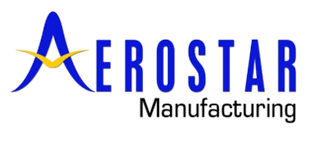Why use CNC machining for your rapid prototyping needs?
According to 360PRWire:
Rapid prototyping is the process of swiftly and cost-effectively creating a physical prototype of a new product concept. Certain concepts will only be utilised as cosmetic mock-ups or scale models, while others would have to satisfy more stringent operational requirements.
Prototypes are utilised for experimentation, concept modification, and fine-tuning overall efficiency. As a result, production efficiency, adaptability, and scalability are important characteristics to seek for.
Let’s examine CNC machining in more detail and why you should use it for rapid prototyping.
Imitates The Finished Product
Certain prototypes are made to solely imitate the end product’s design, whereas others are made to imitate both its appearance and structure. Once you use rapid CNC machining, the prototype will be remarkably similar to the finished product’s appearance and functioning.
You can utilise CNC machining to create a single final component or numerous parts to build your prototype based on the model. Visual depictions of the prototype or pieces are frequently produced by other rapid prototyping technologies, such as 3D printing.
CNC machining, on the other hand, produces items that are quite comparable to those made by injection moulding, which is a standard mass-production method. As a result, CNC machining produces long-lasting, functioning pieces that nearly match the finished, ready-to-sell product.
Exceptional Output
CNC machine equipment can significantly minimise the items’ manufacturing and ancillary time. The CNC machine tools have a wide spindle speed and feed capacity, which allows them to perform efficient cutting with big volumes of material.
High-speed machining is now becoming a reality for CNC machine tools. Parts are moved using CNC machine tools. The semi-finished product’s quick movement and placement, as well as high-speed cutting, shorten the procedure cycle times and boost productivity levels.
Various Materials are Available
While 3D printing service uses plastic polymers in most cases, CNC machining uses a broad range of materials. Aluminium and aluminium alloys are the most frequent materials employed in CNC machining. Nevertheless, there are numerous additional materials available. CNC machines can also be made of brass and stainless steel and nonmetallic materials such as plastics, wood, and foam. This makes it simple to create a prototype with the desired toughness, tensile power, wear tolerance, and other properties.
Customisation
Because rapid prototyping solutions allow you to obtain a prototype promptly, you may realise that the prototype you receive isn’t quite what you expected. You can receive a new prototype rapidly to fit your exact requirements without paying a lot of money for many prototypes.
By implementing changes to the digital file, you will be capable of personalising your product prototype. Other approaches are unable to accomplish this; therefore, your prototype may fall short of your expectations. You can schedule a new quick prototyping project for this updated design once you’ve made the necessary adjustments.
Accuracy
In the contemporary machine shop, computer-controlled cutting parameters are the only way to reach greater accuracy and efficiency. Tolerances of +0.05mm or 50 microns are common at this level of precision.
For the great wide range of business operations, this is more than sufficient. And it’s a consistent tolerance that can be effortlessly accomplished over manufacturing runs with an endless number of model numbers.
Specialised cutting tools and regulated settings can accomplish tighter precision than this, which may be necessary for particularly stringent aerospace, automotive, or scientific purposes.
Optional Finishes
Numerous finishing options are available once your parts have been assembled, making it simple to achieve the look and feel you choose for your prototype.
This is particularly relevant when evaluating the impacts of various finishes on sales values, such as a painted finish versus a chrome finish.
Alternatively, you may want to check that a specific finish operates as expected, such as a powder-coated part’s rust resistance. Powder coating, sanding, chrome plating, bead blasting, anodising, and other finishing options are available for your prototype.
Highly Adaptable
The processing software determines how parts are machinable on a CNC machine tool. It is not the same as a standard machine tool. Numerous equipment and fixtures do not need to be manufactured or replaced, and the machine tool does not need to be adjusted regularly.
As a result, CNC machine tools are ideal for situations where parts must be replaced regularly. It is appropriate for single-piece, small-batch manufacturing and product design, as it reduces the manufacturing setup cycle and saves a significant amount of process equipment expenses.
Final Thoughts
For those that want to evaluate their item before going into large production, rapid prototyping is a great alternative. If you require a prototype immediately, this process is far speedier than 3D printing or injection moulding.
Rapid prototyping with CNC machines has a lot of advantages, and it will give you a high-quality item model. Furthermore, the high quality of the prototype enables you to evaluate your product in a range of methods before moving into full manufacturing, allowing you to make adjustments.
